Yo-Yo Ma. World renowned cellist. Child prodigy. Many American audiences got their first glimpse of Yo-Yo Ma when at age 7 he was introduced on television by Leonard Bernstein. Over the decades, Yo-Yo Ma has opened the senses of the masses to the beauty of classical music. Passionate about bringing about peaceful change in the world through the universal musical language, in 2000 Yo-Yo Ma started bringing artists – and their culturally unique musical instruments – from around the world together to play in the “Silk Road Ensemble”. Morgan Neville. Documentarian. Academy Award winner for “20 Feet From Stardom”. Although having an affinity for documentaries involving music, Neville is equally adept with straightforward factual stories, as we saw in “Best of Enemies.” And now, Neville returns to music as he teams up with Yo-Yo Ma for THE MUSIC OF STRANGERS: YO-YO MA AND THE SILK ROAD ENSEMBLE with what is nothing short of symphony for the senses.
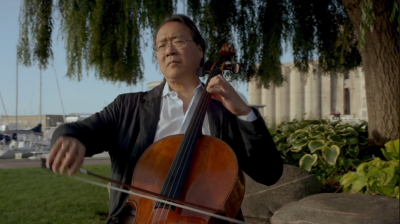
Meeting Yo-Yo Ma for the first time some five years ago, Neville was completely charmed by him. Talking about “everything under the sun”, Neville was struck by the fact that “the kinds of issues he has been grappling with as a musician are the same issues I grapple with as a filmmaker. How important is culture? How important is what we do? How can we make the world a better place with it? And not in a pompous way, but in an existential way, you ask yourself these questions. I feel like this film is really investigating those kinds of issues. To me, and I’m sure to Yo-Yo, the conclusion is, culture is as essential if not more essential than anything else. We tend to think of things like the arts as “nice” but non-essential in America. I think that’s just dead wrong.” And it’s that shared passion and belief that gave birth to THE MUSIC OF STRANGERS.

Structured similar to his narrative with “20 Feet From Stardom”, Neville starts his cinematic structure with the known commodity – Yo-Yo Ma – giving us insight to the man today, his passions, and then travelling back in time with his story before then moving onto the narratives of other musicians. Honing in on both the dramatic gravitas of each musician’s story and the turning points in their lives or careers, and the collective journey of the Silk Road Ensemble, together with his cinematographer Graham Wiloughby, Neville introduces us to the members of the Silk Road Project by way of footage of the early meetings as virtuosos and their “exotic” instruments come together for what was described as the “Manhattan Project of Music”, all eager to explore Ma’s idea of having culture, tradition and music meet and see just what kind of harmony through music could be found.

As if on a musical road trip around the globe, the audience’s interest is sparked as much as that of the individual musicians on their meeting and learning about one and other. Honing in on some of the more colorful musicians, we meet several up close and personal: Wu Man – master of the pipa, a Chinese stringed instrument. Wu Man grew up in post-Maoist China and as one of the more fortunate, his musical talents were shepherded and cultivated; Kinan Azmeh, a clarinetist born in Damascus, stirs the heartstrings as he plays for young students now in Syrian refugee camps; Kayhan Kalhor, an Iranian exile, plays the kamancheh. Kalhour provides personal insight into the revolution in Iran, relating palpable sorrow of his cancelled concerts in his homeland; and, Cristina Pato, a bagpiper often referred to as “the Jimi Hendrix of Galicia” talks of the trickle down effect of Spain’s economic situation and its affect on Pato’s family. Each is as interesting as the next. Significant is that Silk Road Ensemble celebrates cultural identities while empowering the individual musicians through the connective notes of music as they grapple with their own feelings due to political unrest, religious persecution, displacement, hardships in their homeland.

Crisply edited by Helen Kearns and Jason Zeldes with an almost lyrical ebb and flow, the individual stories are judiciously placed between beautiful showcase musical performances from not only the ensemble as a whole but the individual musicians. Through the musical numbers, we learn about and experience new sounds from instruments not familiar to Western audiences, while feeling the exhilaration of a musician emotionally swept up into his or her own performance. We feel their passion. There is a palpable harmony amongst all. For Neville, it was difficult finding the right musical performances for the film, but ultimately, “It was a combination of what I wanted and what I had. It was not always easy, but the thing is that I filmed with them for so long that I had a fairly good pool of material to pull from.”
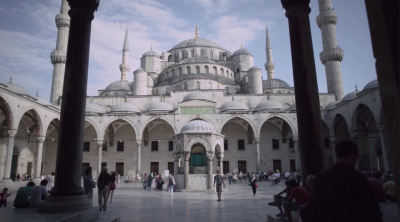
The musical numbers are flawlessly lensed. Wiloughby’s camera has a fluidity that engages, capturing not only the musical and cultural fusion, but creating an electrifying sense of spontaneity akin to street performance but on a much grander scale. And this cinematic sensibility never falters no matter where on the globe they are filming. When it comes to working with Wiloughby, whom has long worked with Neville, “I feel like we both push each other to our extremes and I think that gets the best footage out of situations that are not conducive to shooting that way. We brought a steadi-cam to rural China. Kind of nuts. We were shooting 6K and downloading all night long in tiny little rooms. It was not like a commercial shoot. It was very bare bones.”
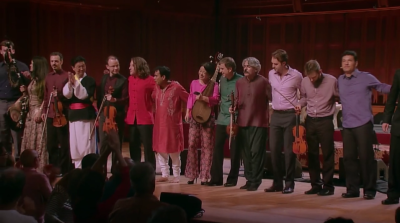
“Logistically challenging” may be an understatement when describing THE MUSIC OF STRANGERS. After initially meeting with Yo-Yo Ma and deciding to embark on a documentary journey with him, Neville thought, “I’ll get the camera and I’ll follow Yo-Yo around and we’ll have some fun and I’m sure I’ll learn some things. Boy did I! This was definitely one of those jumping off the cliff decisions to make a film. I knew it had interesting ideas and interesting characters but I just didn’t know where it was going to take us.”
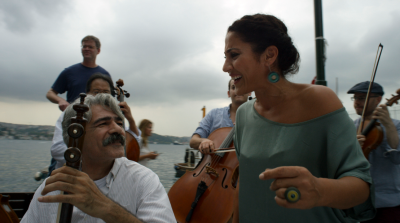
Knowing the film was definitely going to have a global component, that factor was ever evolving throughout the cinematic process. For Neville, finding that connective thread was ultimately, “the characters I chose to concentrate on. They’re all kind of on the same journey, which is, on this journey away from home and returning home. And by ‘home’, that can mean tradition. They all come from these incredible cultures and traditions and they all did the unexpected thing and left that tradition in some way or left what was expected of them as a musician in their country. They all kind of return to where they came from, metaphorically or literally, with this new worldly knowledge. To me, that’s like a hero’s journey.”
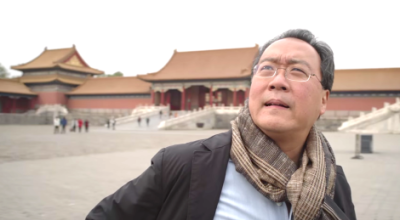
Shooting in six different languages (all of which we get to experience in the film), THE MUSIC OF STRANGERS also serves as a global travelogue. While we see the beauty of rural China, the emotional power of Syrian refugees displaced in Jordan now affected by Azmeh and his clarinet, or the breathtaking awe and reverence of the Basilica Cistern, hearing Morgan Neville talk about during our exclusive interview is something else. “It was immensely complicated to shoot in some of those places. But as a filmmaker, you just can’t beat locations. The footage we shot of Kayhan [Kalhor] playing in the Basilica Cistern in Istanbul, the underground waterworks that are hundreds of years old; it’s just the kind of shadowy caves that he’s playing in – being in their alone filming him playing was one of my all time favorite filming experiences. When you’re filming in places like that, there’s no comparison. . .In China, we filmed it through proper channels. Because we were filming in China with Yo-Yo, we wanted to do it as you are supposed to – legally, sanctioned by the government. . .We didn’t know what that would mean and we were assigned a handler, but fortunately our handler was most interested in sleeping on the bus and reading the newspaper than every paying attention to us. . .so, we were just sort of wandering.”

As much an exploration of what the musicians in the film embarked on, THE MUSIC OF STRANGERS distills something amorphous and powerful into something that works filmicly. For these musicians who come from other countries, being an artist is as important as anything else, equating to a political or religious act. Underscoring the foundational philosophies of the Silk Road Ensemble, through THE MUSIC OF STRANGERS it becomes crystal clear that culture is one of the basic nourishments of life; that through music and cinema we can – and do – find harmony in life. “There is no East or West. It’s just a globe.” A globe filled with THE MUSIC OF STRANGERS.
Directed by Morgan Neville
Artists: Yo-Yo Ma, Kinan Azmeh, Kayhan Kalhor, Wu Man, Cristina Pato












